A few weeks ago I was ready to do my first Linear Systems of Equations problem with my MFM2P grade 10 applied class. The first step is to get them to solve systems graphically (a review of gr9 essentially) and interpret the solution. The last few times I did that topic, I used a scenario of a race between a runner and a dog-walker w/ a head start; where/when do they meet? It’s always complicated and requires more hints from me than I’d like. So I decided to design a new scenario – something that would allow us to practice our linear relation skills at the same time. I came up with this scenario of 2 different bank account balances as they grow over time:
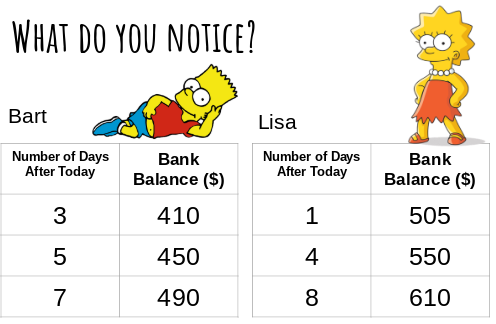
- Presented with the above data, we worked through our notice & wonder routine using Pear Deck.
- Then I showed them the question I had for them:
“When will they have the same bank balance on the same day?”
Students estimated how many days before that would happen via Pear Deck. - Then we had turn & talk time with our visibly randomly grouped (VRG) partners to discuss what we should measure, look up, and/or calculate in order to solve the problem. We shared our thoughts to the whole group.
- Then I sent students to their group’s board (VNPS) to solve the problem in any way they saw fit. Periodically when the majority of groups seemed either stuck, or ready for it, I called them all over around some board space to do some direct teaching. The things I called them over to talk about at different moments:
– first differences & whether or not each table is linear
– Desmos: plot the tables
– Desmos: linear regression for line of best fit
Asked them to sketch their graph from Desmos on their board.
Here are their boards: - We had a follow up day where I walked them through interpreting a couple of different graphs of system of equation scenarios.
The whole activity is available in this slidedeck that has added Pear Deck interactivity if you use their add-on.
– Laura Wheeler (Teacher @ Ridgemont High School, OCDSB; Ottawa, ON)









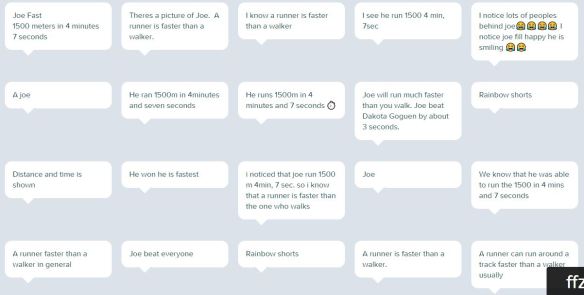
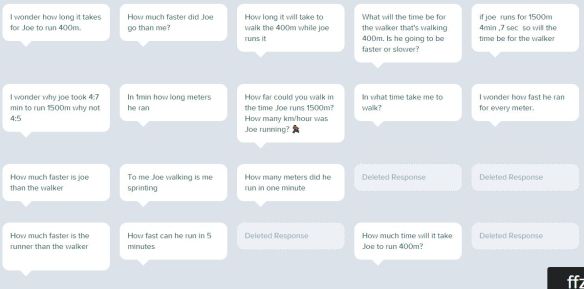
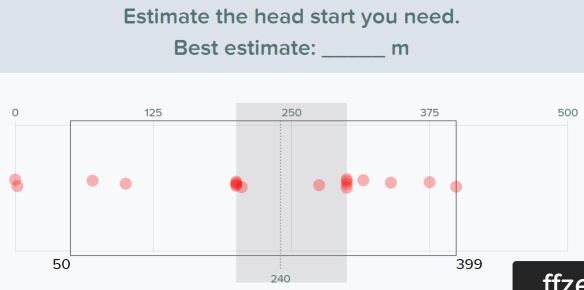
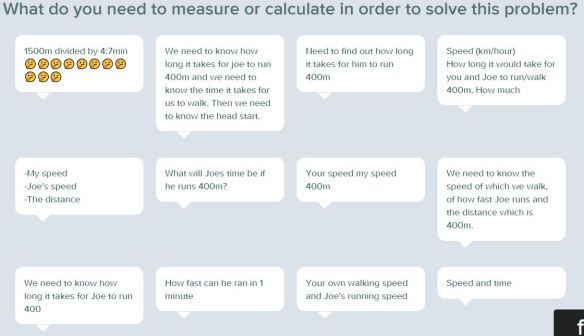
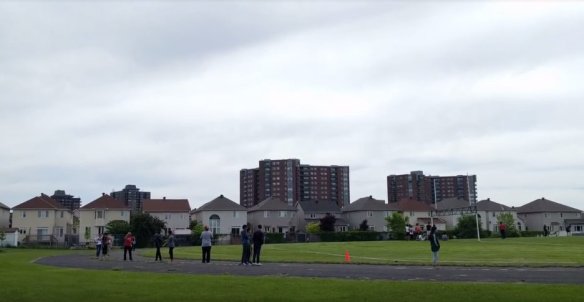
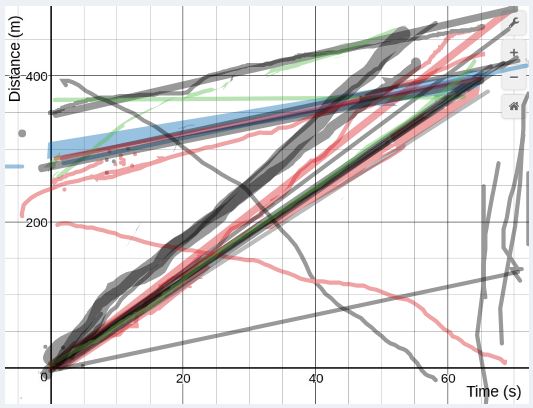

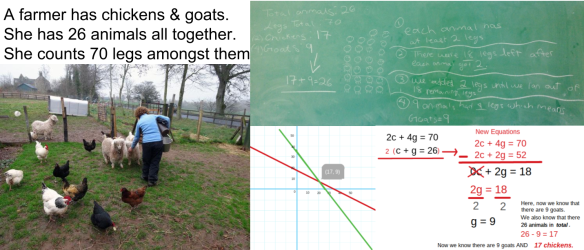

 We discussed some of the above responses that did not meet the criteria of a total of 70 legs and why.
We discussed some of the above responses that did not meet the criteria of a total of 70 legs and why.







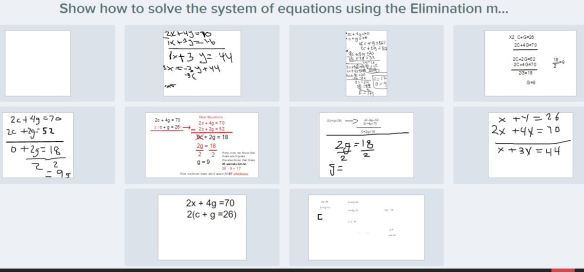
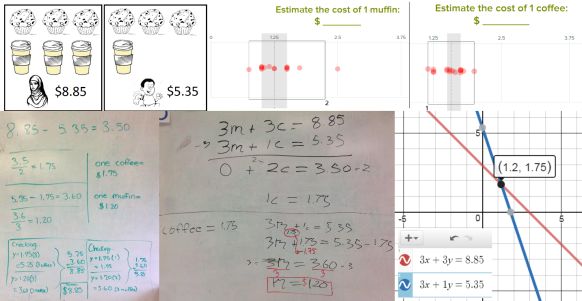

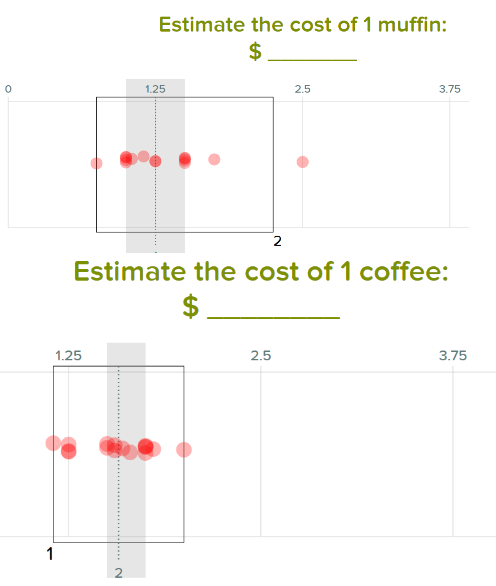












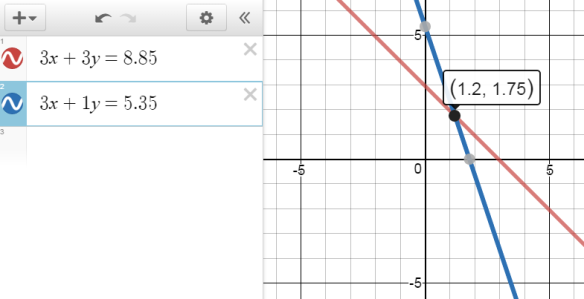
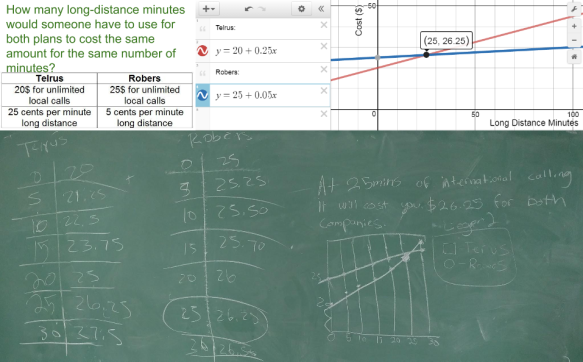

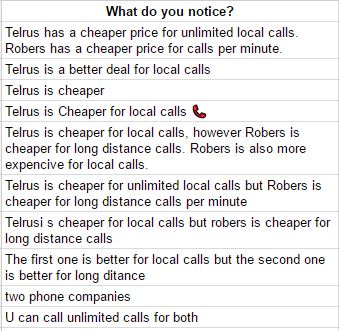
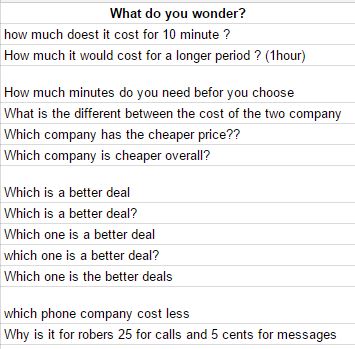
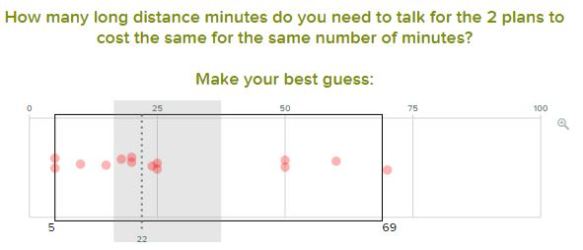
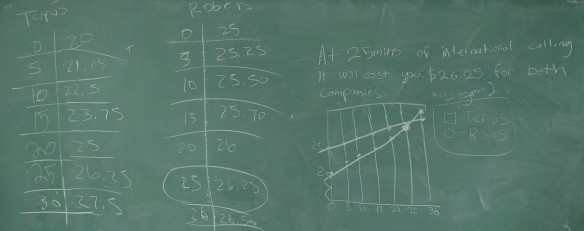
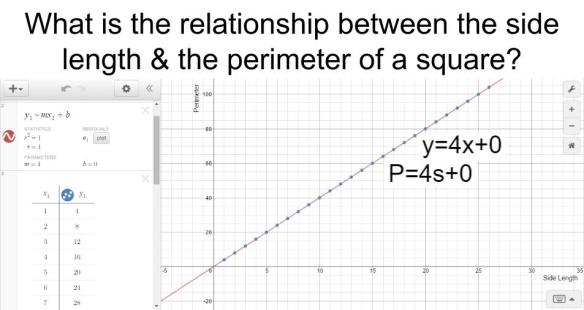
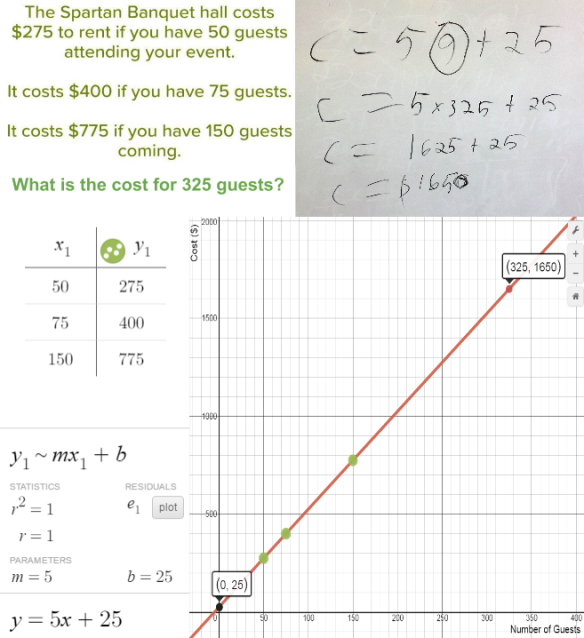
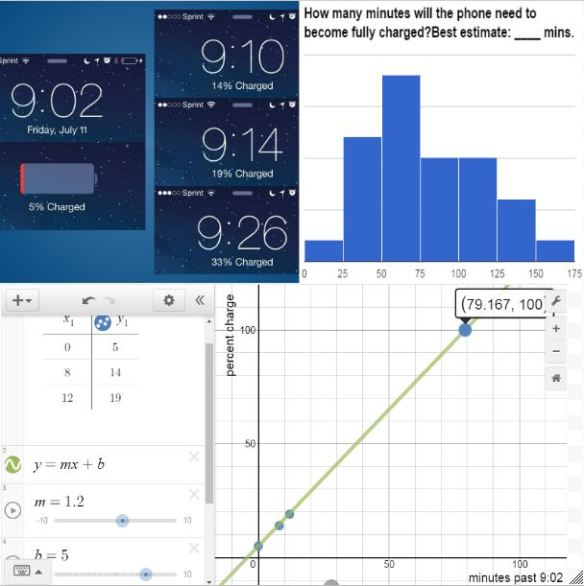
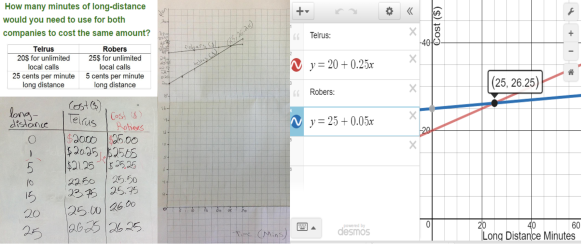
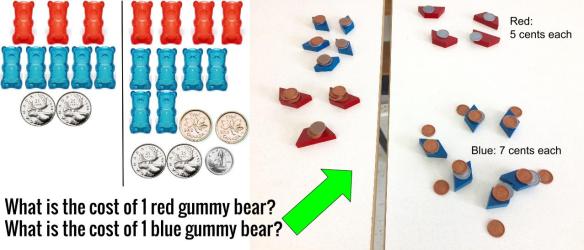
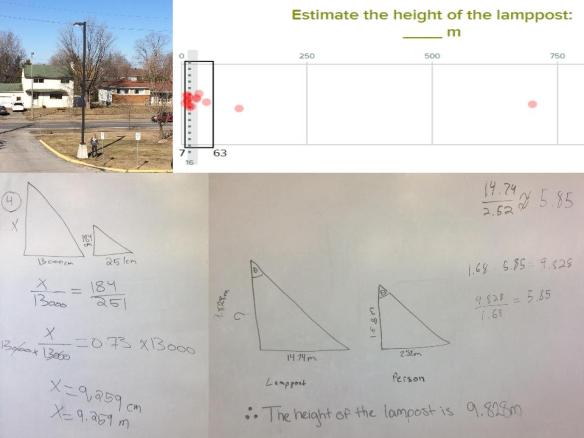
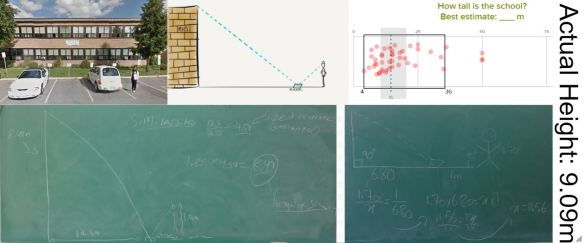

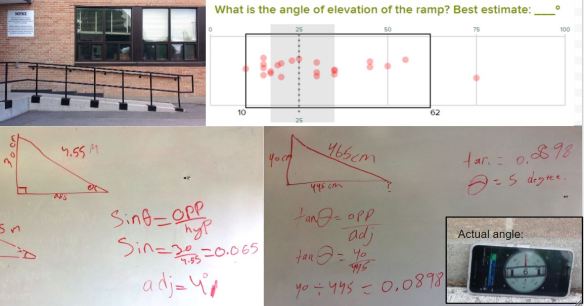
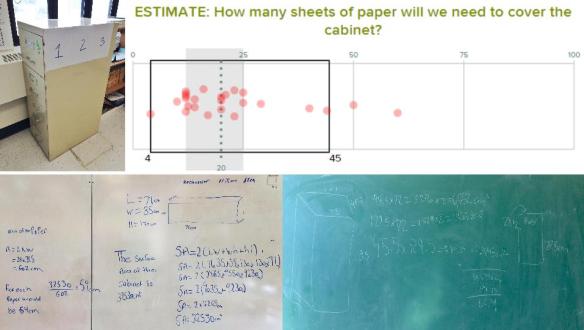

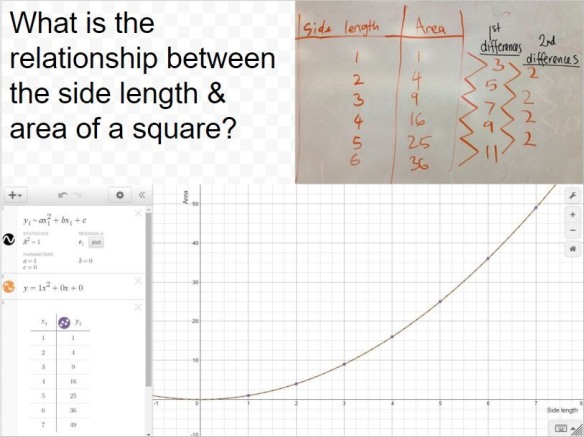
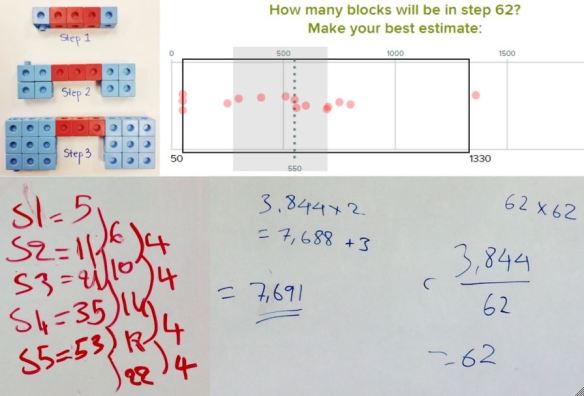
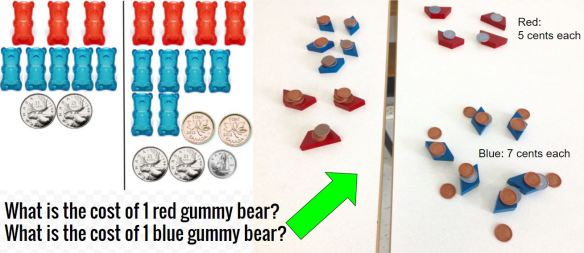

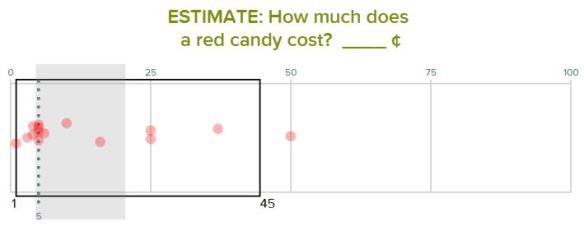
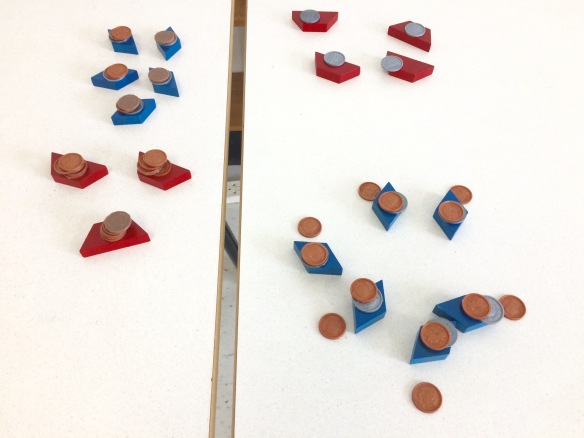
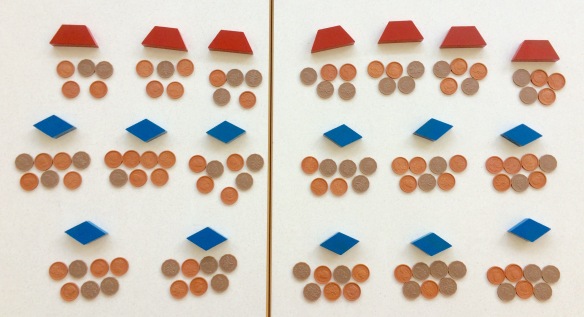
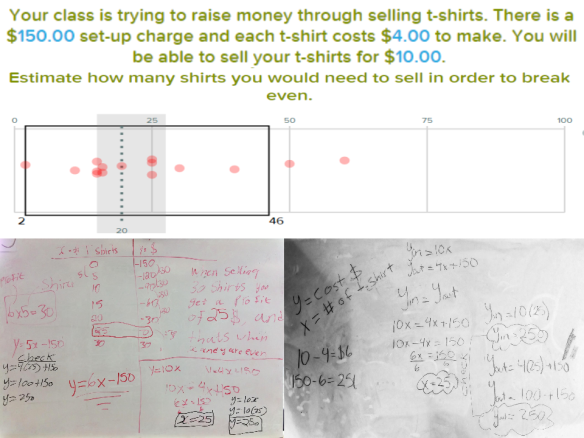
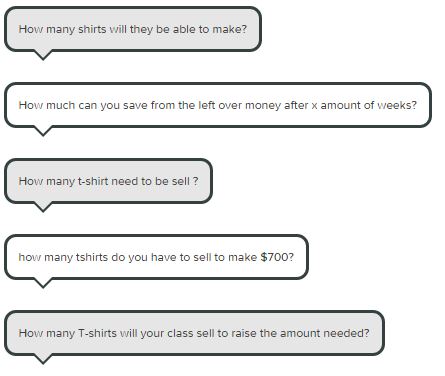




 I’m trying to blog more about my lessons/activities/problems this year. Today’s is more of a problem-based learning approach I guess. My goal was to review solving systems graphically with my grade 10 academic students.
I’m trying to blog more about my lessons/activities/problems this year. Today’s is more of a problem-based learning approach I guess. My goal was to review solving systems graphically with my grade 10 academic students.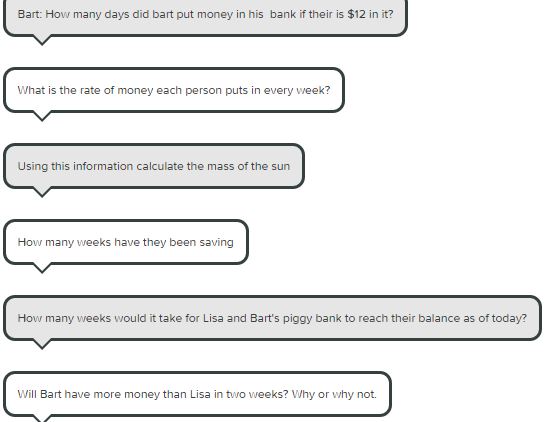
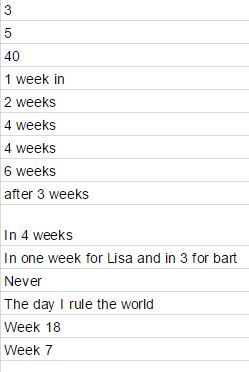
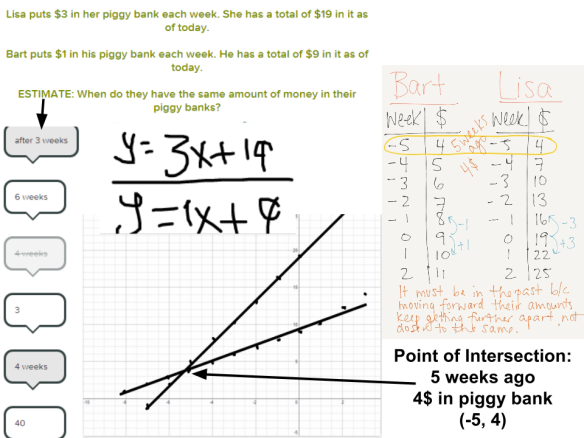
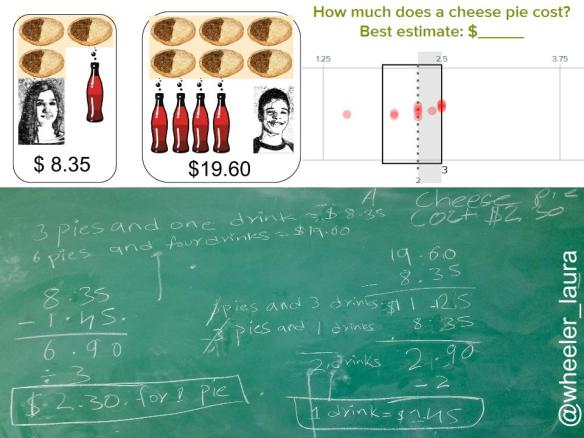 I’ll break it down into the 3 acts.
I’ll break it down into the 3 acts.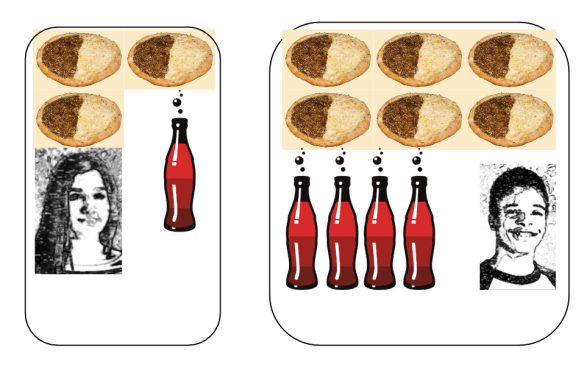 What do you notice & wonder?
What do you notice & wonder?

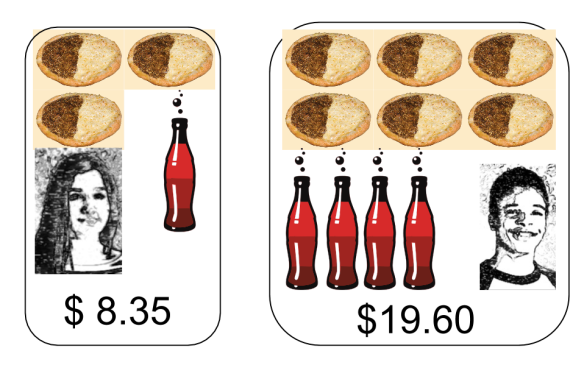
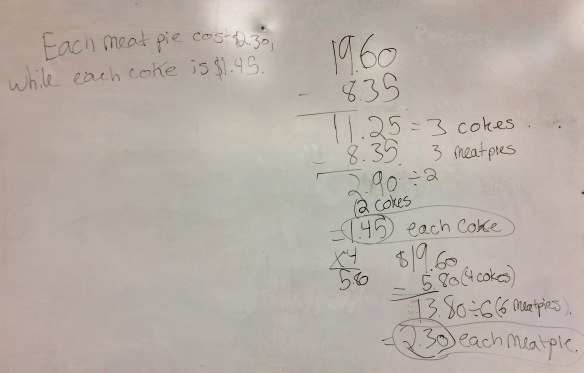
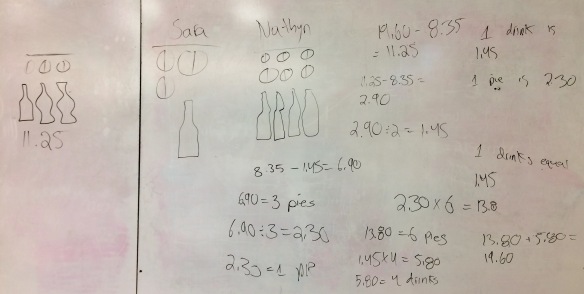
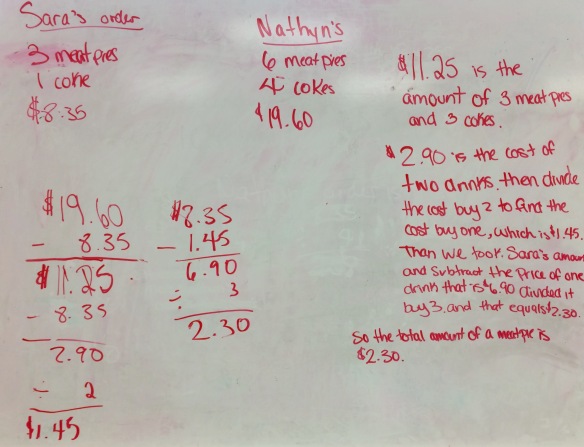
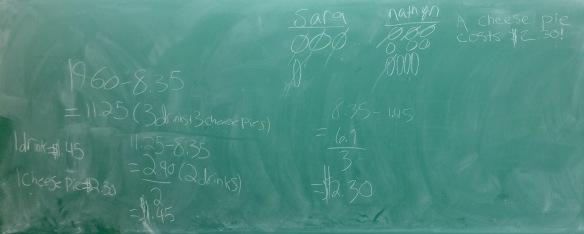
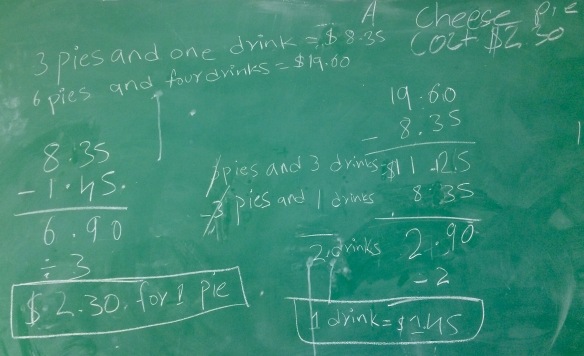 All of the groups subtracted the smaller order from the larger order twice in order to eliminate the cheese pies and leave the cost of 2 drinks, from which they easily determined the cost of 1 drink. Then went back to calculate the cost of a cheese pie.
All of the groups subtracted the smaller order from the larger order twice in order to eliminate the cheese pies and leave the cost of 2 drinks, from which they easily determined the cost of 1 drink. Then went back to calculate the cost of a cheese pie.
